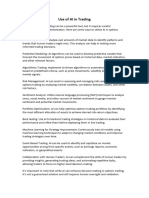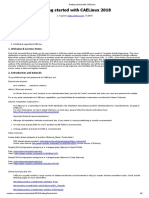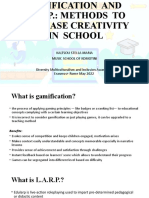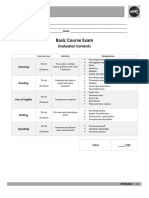Building a Call Options Open Interest
Analysis Module for an AI Trading Assistant
August 14, 2025
1. Task Overview
As an expert in options trading and AI development, develop a specialized module for the
Options Trading Agent focusing on analyzing “open interest” (OI)—the count of active
options contracts—and “last traded price” (LTP)—the latest sale price—for call options.
Call options allow buyers to purchase an asset at a fixed price, typically when expecting
price increases. The module should:
• Analyze four call scenarios to gauge trader sentiment (e.g., bullish trends) and recommend
trades.
• Operate as a building block in the larger AI tool, handling data files, checking complete-
ness, spotting issues, adding clear notes, and generating reports.
• Incorporate backtesting simulations using the provided PDF’s framework (e.g., ‘Strategy‘
class for rules, ‘Broker‘ for mock trades) to validate suggestions.
• Use Retrieval-Augmented Generation (RAG) to pull from reliable sources, ensuring pro-
fessional yet beginner-friendly outputs.
2. Functional Objectives
The module must perform the following step-by-step processes:
1. Accept call options data (e.g., files with OI/LTP shifts, plus details like price rises/falls).
2. Sort the data into the four call patterns.
3. Run a checklist to ensure all four scenarios are included — no missing pieces.
4. Identify signals (e.g., bullish trends) and warn about problems (e.g., incorrect positive
reads).
5. Add user-friendly comments in the results.
6. Offer trade ideas for calls (e.g., “buy a call if expecting an upswing”).
7. Produce a downloadable report (e.g., Word doc with key highlights).
8. Create a clean JSON summary of insights.
1
� 9. Add backtesting: Leverage PDF classes like ‘Strategy‘ (for logic) and ‘Broker‘ (for order
simulation) to run virtual trades per scenario, e.g., via ‘strategy.next()‘ on historical rows.
10. Enhanced Feature: Call Scenario Checklist Verification:
• Spots when data is call OI-centric.
• Matches it against the four call patterns list.
• Flags gaps with a clear message.
• Example: “Seems you’re diving into call options trends. Per our guide, data hits 3
of 4 patterns. Missing: ‘Long Liquidation (OI down, price down)‘.”
3. Technical Requirements
• Interface: Use Gradio or Streamlit for a basic demo interface.
• AI Integration: Choose a RAG-friendly AI model (e.g., Gemini or Claude) to enhance
with expert info.
• Input: Files like .csv or .json with call data.
• Output: Highlighted report plus JSON wrap-up.
• RAG Usage: Rely on RAG for call scenarios and PDF backtesting (e.g., use ‘Data‘
class to load history, ‘Broker.next()‘ to process trades).
• PDF Outlines: ‘Data‘ for database pulls, ‘Strategy‘ for custom strategies, ‘Broker‘ for
safe trade simulations.
4. Scenario Types and Use Cases
Cover these four call patterns, with plain-English breakdowns:
Long Buildup:
OI up, price up — Traders going bullish, expecting gains; suggest buying calls or bull
spreads.
Short Buildup:
OI up, price down — Bearish bets on drops; recommend buying puts or bear spreads.
Short Covering:
OI down, price up — Closing shorts, possibly sparking rises; suggest buying calls or bull
put spreads.
Long Liquidation:
OI down, price down — Unwinding longs, signaling weakness; recommend buying puts
or bear calls.
2
�5. Red Flag Detection Features
• Gaps or errors in data (e.g., no price change info).
• Wrong sentiment labels (e.g., bearish in a bullish setup).
• Fuzzy volatility mentions.
• Overlooking PDF rules (e.g., not using Broker.handle expirations for closing posi-
tions).
• Strategy mismatches.
6. Inline Commenting Suggestions
• Place notes directly in the report for context.
• Link to the specific scenario (e.g., “From Long Buildup: Bullish signals as traders build
positions...”).
• Optional: Propose fixes, tied to backtesting (e.g., ‘‘Run ‘Strategy.next()‘ to model
upside potential”).
7. Output Format Example
{
” module ” : ” C a l l OI S c e n a r i o s ” ,
” scenarios detected ”: 4 ,
” missing scenarios ”: [ ] ,
” issues found ”: [
{
” s c e n a r i o ” : ”Long Buildup ” ,
” i s s u e ”: ” Bullish sentiment spotted ” ,
” s e v e r i t y ” : ”Medium ” ,
” recommendation ” : ”Buy c a l l o p t i o n s ; t e s t v i a Broker . next ( ) f o r
equity curve . ”
}
]
}



















































































